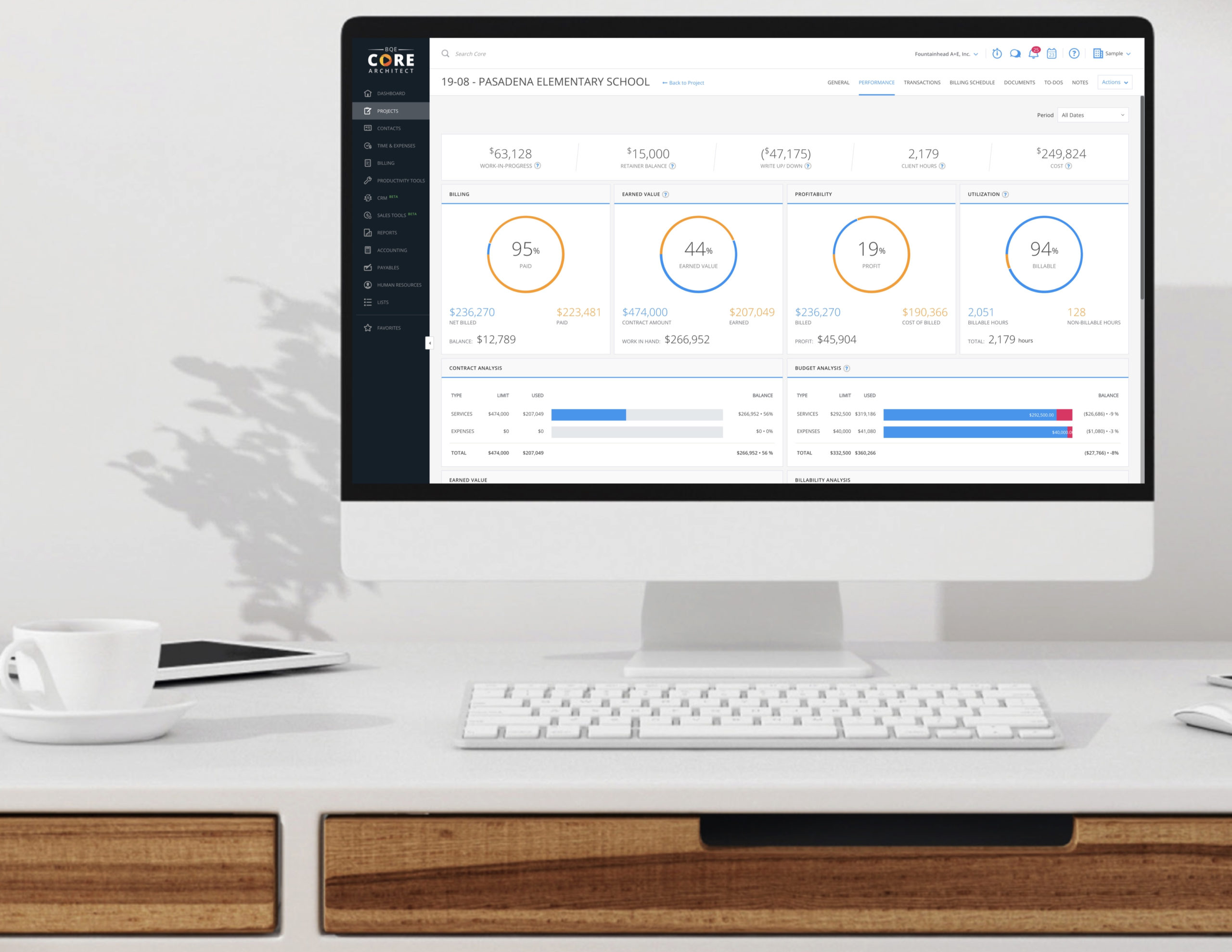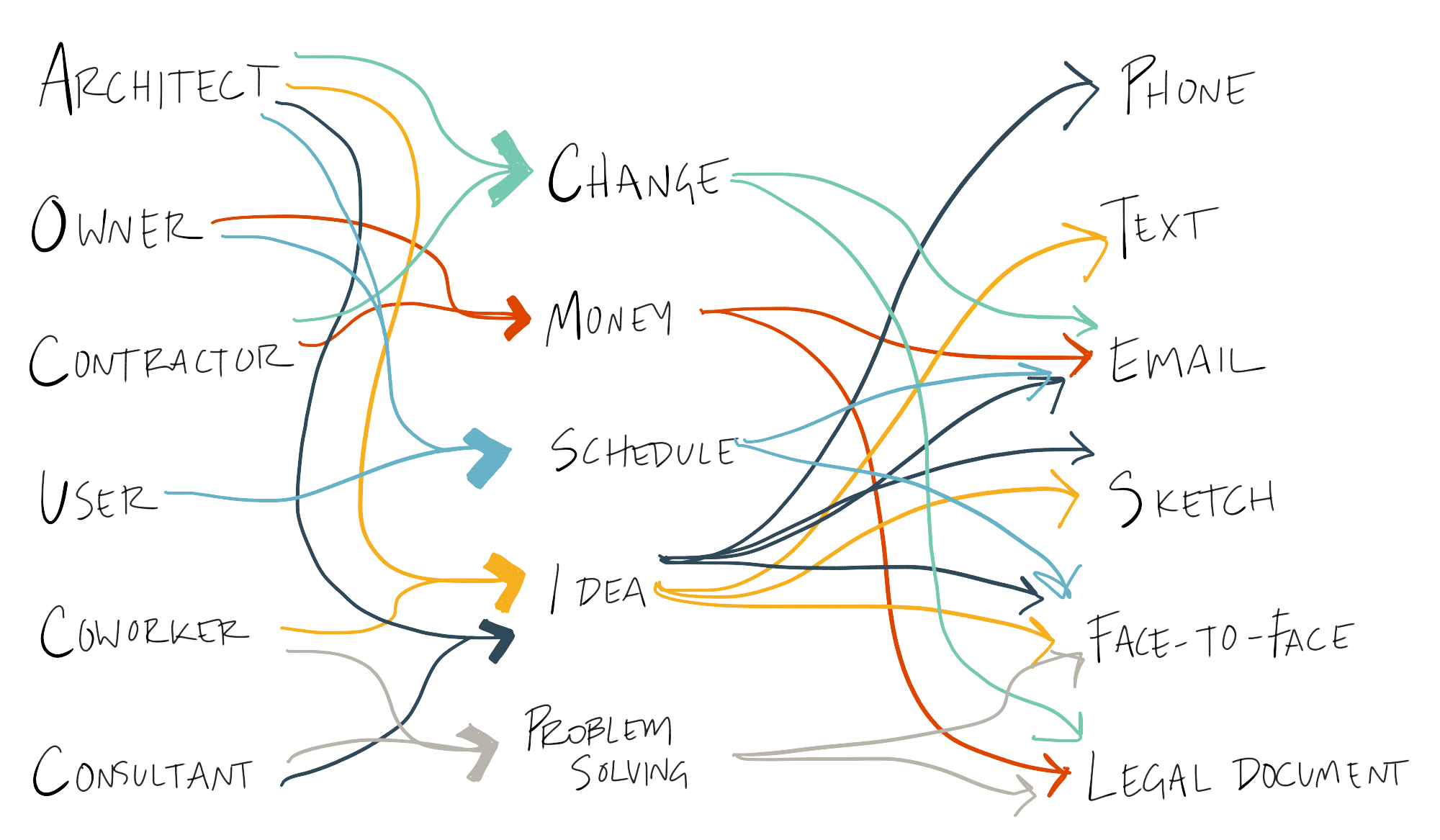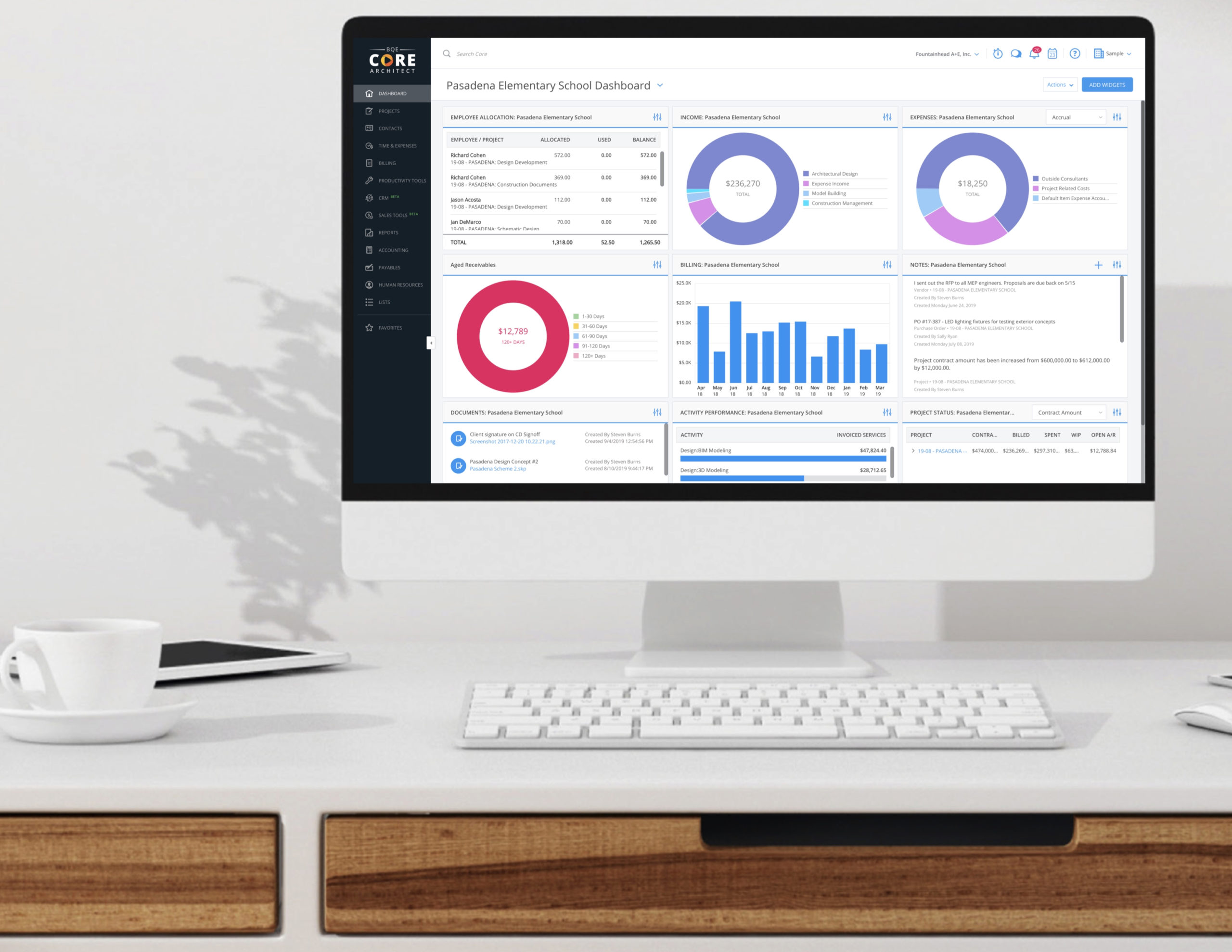Project management takes a special skillset, especially in architecture. One must be able to keep track of multiple moving pieces, including budgets, personnel and — most frustratingly — the whims of the client.
Patience, flexibility and a little bit of luck all go a long way toward managing a successful project, but the most important thing is staying organized. Project managers are tasked with tracking time, expenses and work in progress to ensure that a project is delivered on time and within budget, providing the client with what they need while helping the architecture firm to maintain profitability.
Of course, managing a successful project is about more than just tracking tasks. Project managers must also be conscientious in their outlook and approach. This means staying aware, from the outset, of what might go wrong and how to quickly get things back on track. After all, systems are only as good as the logic that underpins them.
With this in mind, the following guide includes 10 of the most common mistakes project managers tend to make, and tips on how to prevent them.
1. Not Defining Goals — And Agreeing on Them
A project with ill-defined goals — or worse, one where the client and the team aren’t on the same page — is doomed from the start. That’s why it is important to define your objectives as clearly as you can and to make sure the client and the team are on the same page.
In addition to solidifying what precisely the client will see as the measure of success, it is vital to talk about internal objectives and agree how they’ll be measured. This involves examining your key performance indicators (KPIs) and benchmarking them.
Having clients agree to KPIs in advance is an important way to protect your firm in the event that the client is dissatisfied.
2. Not Thinking Through Your Estimates
It’s easy to be optimistic, and to promise the client that you will be able to accomplish a lot in a short time frame and a modest budget. In fact, a little bit of this can-do attitude is probably necessary if you are to succeed in an ambitious project.
However, there is no sense — or honor — in running into a project blind. In order to create a realistic schedule and budget, it is imperative that you look at data from previous projects to see how much time and money you spent in the past, especially if you have information from previous projects.
Good project managers know how to read data and use it to make realistic projections. Hone this skill if it isn’t currently an area of strength.
3. Not Asking for What You’re Worth
Past client data is also important for ensuring that your client pays you enough. In determining what to bill, you need to examine your employee’s utilization rates on past projects.

Image courtesy of BQE
There is a nifty formula for determining the minimum bill rate, which is what you should charge for each employee’s time. This formula takes into account the employee’s pay rate, overhead costs, the target profit and the utilization rate for that employee:
Minimum Bill Rate = (Pay Rate X Overhead Multiplier X Target Profit) / Utilization
Armed with the knowledge of your minimum bill rates, you’ll always know what to charge in order to turn your desired profit. This is a powerful spot to be in.
4. Taking On Projects That Don’t Help Your Firm
Jumping at new opportunities is, in many cases, a virtue. It’s admirable to read a lot of books, travel to different countries, and pick up new languages and skills on a whim. However, when it comes to selecting a project, discernment is the name of the game.
When you decide whether or not to accept a project, a few factors must always be considered. For instance, are the client’s demands practical? Do you gel with their personality? Do you have all the necessary licenses to complete this work? It’s worth keeping a list of key questions and going through them all before accepting a new assignment, even when it seems like a sure thing.
Data can also come in handy here. It’s important to periodically run the numbers and see which types of projects are more or less profitable for you. That said, it is sometimes OK to accept a less profitable project if it will bring exposure or prestige. Whatever your reasoning, just make sure you’ve thought it through.
5. Assigning the Right People to Do the Wrong Tasks
Project managers don’t just manage projects; they manage people. To be a great one, it’s critical that you know your team. This means being aware of their strengths as well as their weaknesses.
Pay attention to employee performance across their various tasks and activities. If possible, use your project management software to run the numbers for utilization and profitability. This way, you can ensure you make the best choices when you hand out assignments.
6. Not Communicating Properly
Communication is a broad issue, but a critical one. As a manager, you need to liaise regularly with the client, the team, and your supervisors. In each case, the information you present needs to be relevant and to the point, ensuring that everyone is on the same page.

Lora Teagarden’s sketch of different communication forms in architecture provides a neat overview of the many interactions within the AEC industry; image via L2 Design
With communication, less is sometimes more. You don’t want to bog people down with irrelevant details that distract them from what they need to be focusing on. Communication must be strategic and meaningful.
Think about which tools will help you simplify your discussions and whether or not you can automate any processes. By making your communication as streamlined and instant as possible, you’ll avoid a lot of confusion.
7. Only Running the Numbers After You’re Done
We’ve talked about data a lot so far, especially in terms of using data from past projects to inform your current strategy. However, it is also important to analyze data from your current project as you are doing it. Good project managers regularly monitor the KPI’s established for the team as the project is underway.
Weekly reviews with the team can help make sure you are on the right track. More importantly, though, you must have a framework in place that you can follow if you find you are falling behind. When you build your systems, always make sure they are flexible enough to accommodate exigencies.
8. Using Inconsistent Tools and Processes
Switching around between different software solutions, methods of communication, and other project management essentials is a recipe for disaster. If the key elements of your project are located in different places, it becomes impossible for everyone on the team to stay up to speed on what is going on.
Consistency is also important when it comes to collecting useful data. If you don’t have comparable sets of data between your different projects, there’s no good way to measure what has worked and what hasn’t.
9. Not Watching Out for Scope Creep
In the project management world, the word “creep” doesn’t evoke a Radiohead song, but a major issue where small changes, over time, lead to a fundamental shift in the scope of the project.
Over the course of a project, it is inevitable that the client will request changes. It is important that you have a plan for how to accommodate these changes without throwing off your overall priorities. A good way to start is having a conversation with the client, up front, about what your expectations are and what types of requests for change are reasonable.
Assertiveness, if it is coupled with competence, goes a long way toward keeping the “creep” at bay.

Image courtesy of BQE
10. Working with Inferior Project Management Software
Spreadsheets had their place in the project management world in the past, as graph paper did and, before that, the abacus. But if you want to manage a project with 21st century efficiency, you need to use contemporary tools. Your project management solution should give you visibility into your projects and help you organize and assign work. Make sure it’s adapted to your needs and that everyone on the team is comfortable using it.
There are a number of factors to consider when choosing a project management system, such as whether it has mobile options and if it is able to share information with other systems. But the key thing to consider is whether it helps your firm achieve its goals. Good software should be easy to use and it should speed up your workflow considerably, automating what needs to be automated and storing important data in places where it is easy to call upon.
You can learn more about errors in project management and how you can refine your operations in the ebook 10 Fatal Project Management Mistakes You Might Be Making (and How to Prevent Them) by BQE Software, the creators of BQE CORE Architect, the smart cloud practice management solution that lets you efficiently and productively handle all your project management, time and expense tracking, invoicing, accounting, HR, and client relationship management on a single platform. To try BQE CORE Architect for Free for 15 Days, click here.









